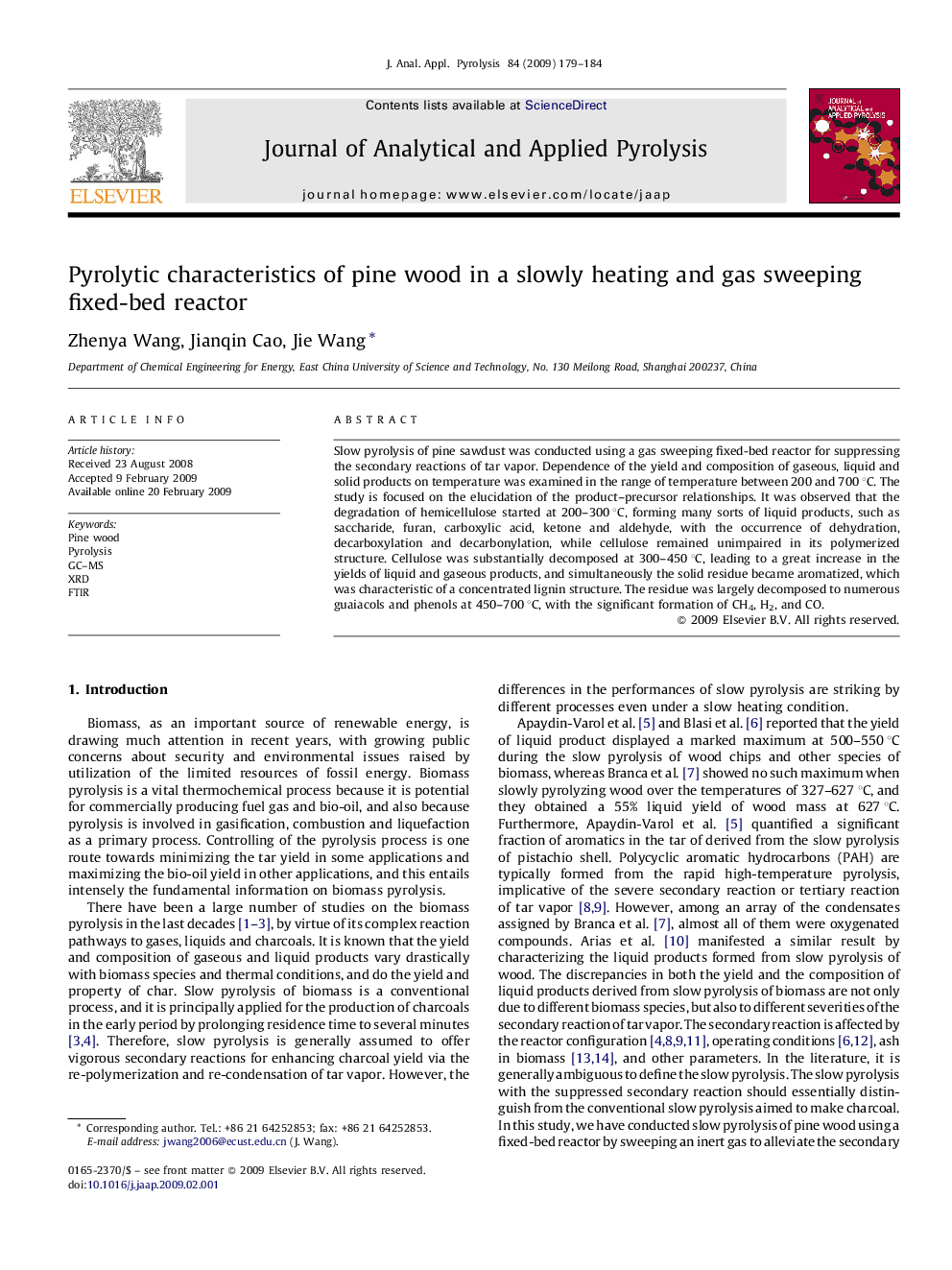| Article ID | Journal | Published Year | Pages | File Type |
|---|---|---|---|---|
| 1197042 | Journal of Analytical and Applied Pyrolysis | 2009 | 6 Pages |
Slow pyrolysis of pine sawdust was conducted using a gas sweeping fixed-bed reactor for suppressing the secondary reactions of tar vapor. Dependence of the yield and composition of gaseous, liquid and solid products on temperature was examined in the range of temperature between 200 and 700 °C. The study is focused on the elucidation of the product–precursor relationships. It was observed that the degradation of hemicellulose started at 200–300 °C, forming many sorts of liquid products, such as saccharide, furan, carboxylic acid, ketone and aldehyde, with the occurrence of dehydration, decarboxylation and decarbonylation, while cellulose remained unimpaired in its polymerized structure. Cellulose was substantially decomposed at 300–450 °C, leading to a great increase in the yields of liquid and gaseous products, and simultaneously the solid residue became aromatized, which was characteristic of a concentrated lignin structure. The residue was largely decomposed to numerous guaiacols and phenols at 450–700 °C, with the significant formation of CH4, H2, and CO.
